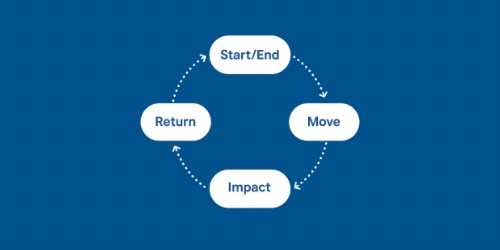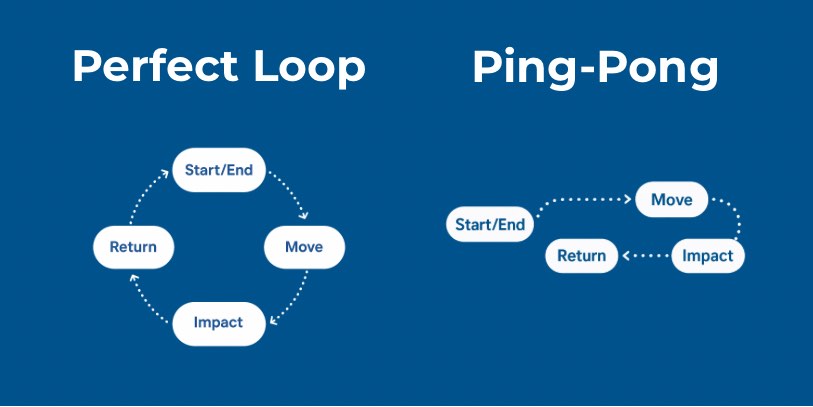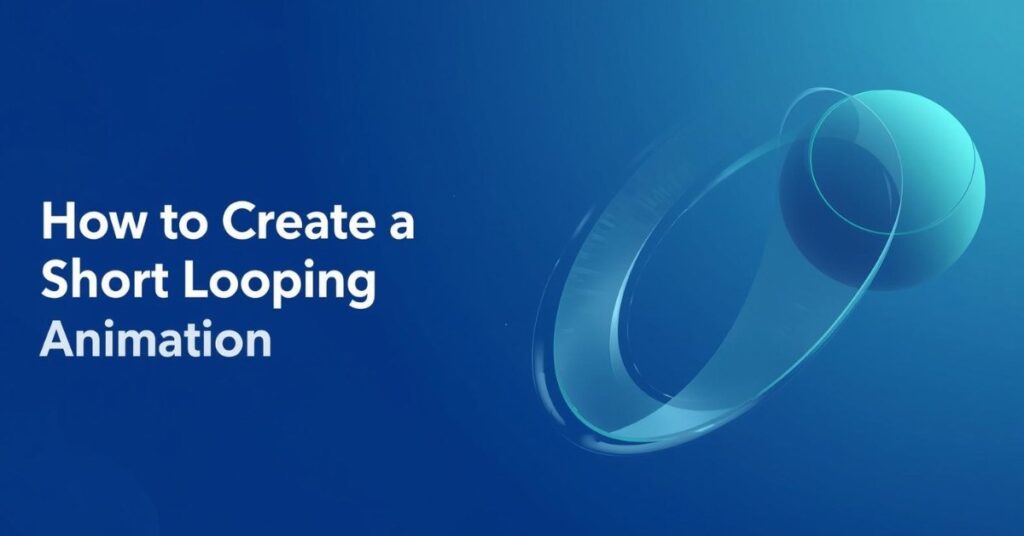A great loop feels like magic: the motion repeats, but it never gets boring. Loops are perfect practice pieces because they’re small, focused, and repeatable—ideal when you’re building skills one habit at a time. Think of a loop like a catchy chorus in a song; you can polish it until it sings, and that polish builds your animation fundamentals with every pass.
What Is a Loop (and Why It Works)?
A looping animation is a short sequence designed to repeat seamlessly. You can cycle from the last frame back to the first (a perfect loop) or play forward and then backward (a ping-pong). Because loops are compact, they force clarity: one idea, readable motion, clean silhouette, strong timing, and a satisfying repeat.

Use the diagram above to anchor the concept: a closed, circular path where the end pose equals the start pose (a perfect loop). Seeing the cycle as a continuous path makes it easier to plan keys and breakdowns that reconnect cleanly without pops.
Why Start with Loops?
Loops are manageable and motivating. You don’t need hundreds of frames—just 12–24 is enough to practice spacing, arcs, and rhythm. Because they finish quickly, loops help you build confidence while sharpening fundamentals that scale to bigger shots.
Step-by-Step: Build a Simple Loop
- Pick one clear action. A bouncing ball, a blinking eye, a flag sway—one idea that reads instantly.
- Decide the cycle type. Perfect loop (end meets start) or ping-pong (forward then reverse).
- Block the extremes. Pose A and Pose B first; then add breakdowns that show the path and attitude.
- Polish spacing and arcs. Ease near extremes, move fastest through the middle, and preserve smooth paths.
- Test the seam. Scrub end-to-start and start-to-end until the join is invisible.

Use the comparison above to choose the structure your idea needs: a closed loop for actions that cycle (like wheels or walk-in-place), or a ping-pong for motions that should reverse (like a pendulum or breath). Picking the right structure upfront keeps the loop readable and saves time in cleanup.
Watch: Make a Seamless Loop (Video Tutorial)
This tutorial demonstrates a perfect loop built from keyframes and simple expressions in After Effects—exactly the cycle type we discuss for actions that return to their starting pose. Watch how the end matches the start to create a seamless repeat, then apply the same approach to your own loop.
Quick Loop Checklist
- One idea only (about 2 seconds total)
- Readable keys + meaningful breakdowns
- Smooth arcs, clean silhouettes
- Seamless join (no duplicate-frame stutter)
- Export exact duration for the platform
Constraints keep you honest, and repetition builds skill—loop by loop your timing and spacing will sharpen.
Want a structured path while you practice? A guided course alongside weekly loops can accelerate your progress.
Final Thoughts
Loops are small on purpose. They help you focus on timing, spacing, and appeal without getting overwhelmed by length or camera work. Give yourself two hours, pick one action, and aim for a seamless repeat. With each loop, you’re strengthening the muscles that power every animation you’ll make next.




























